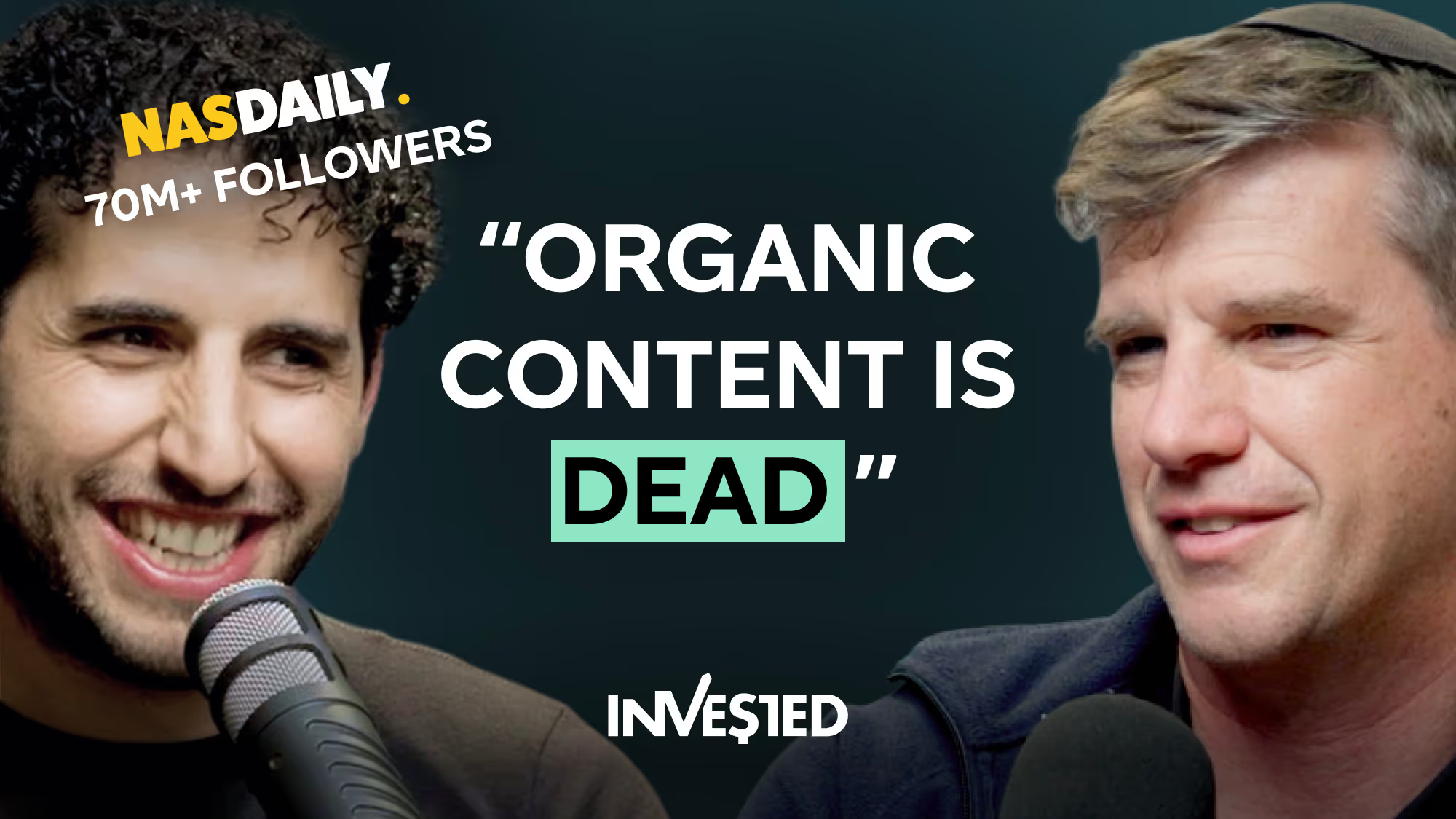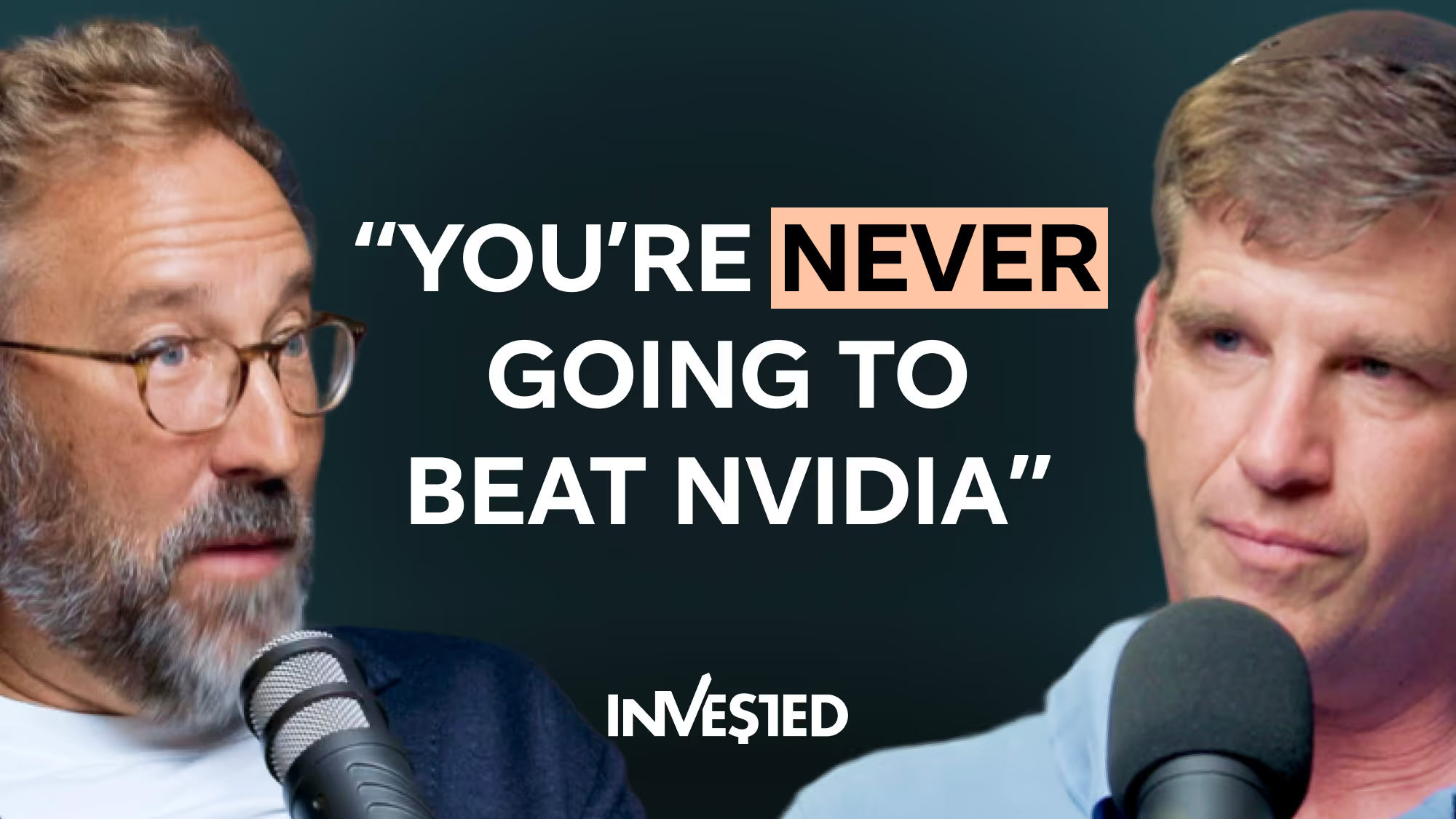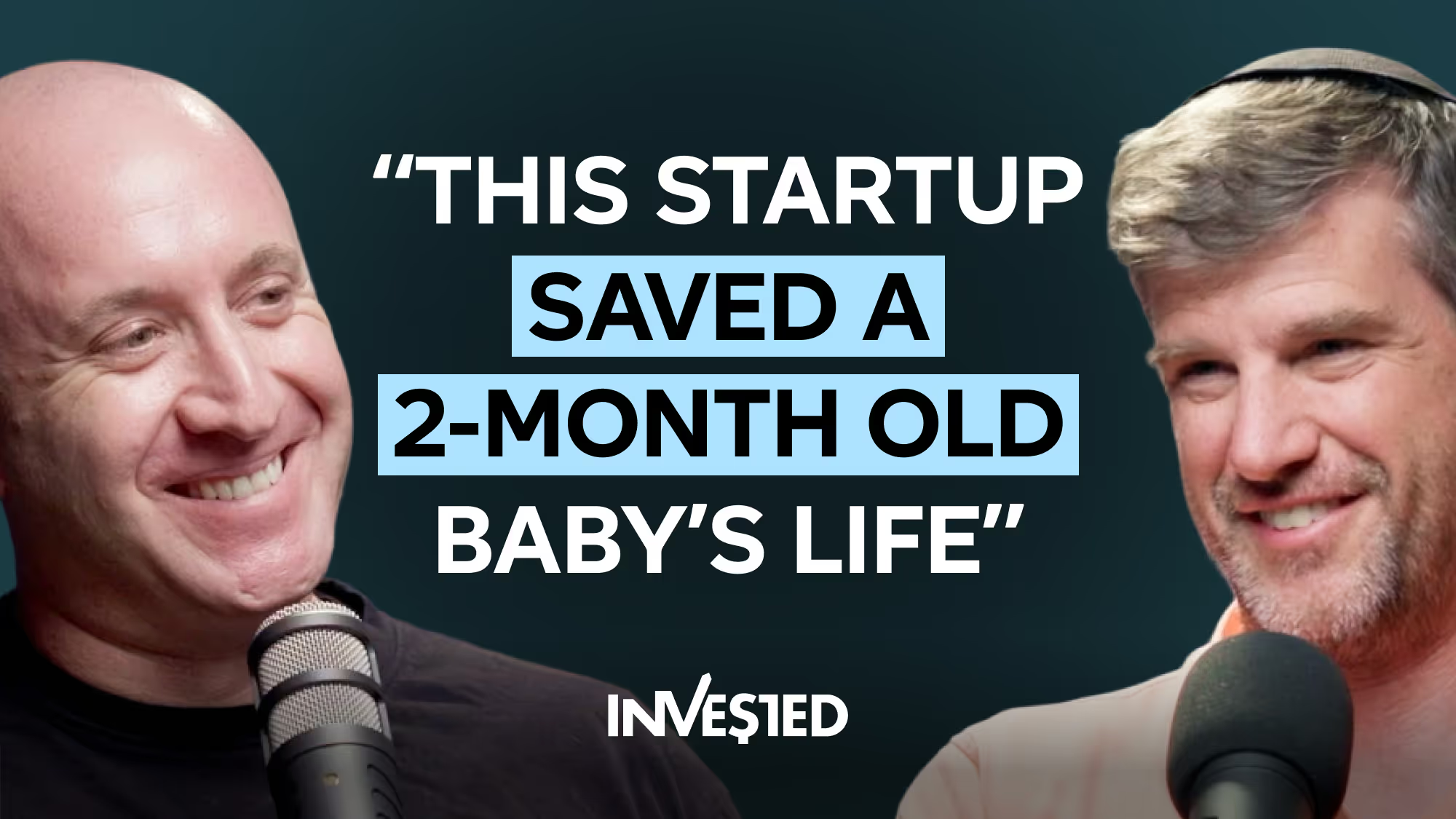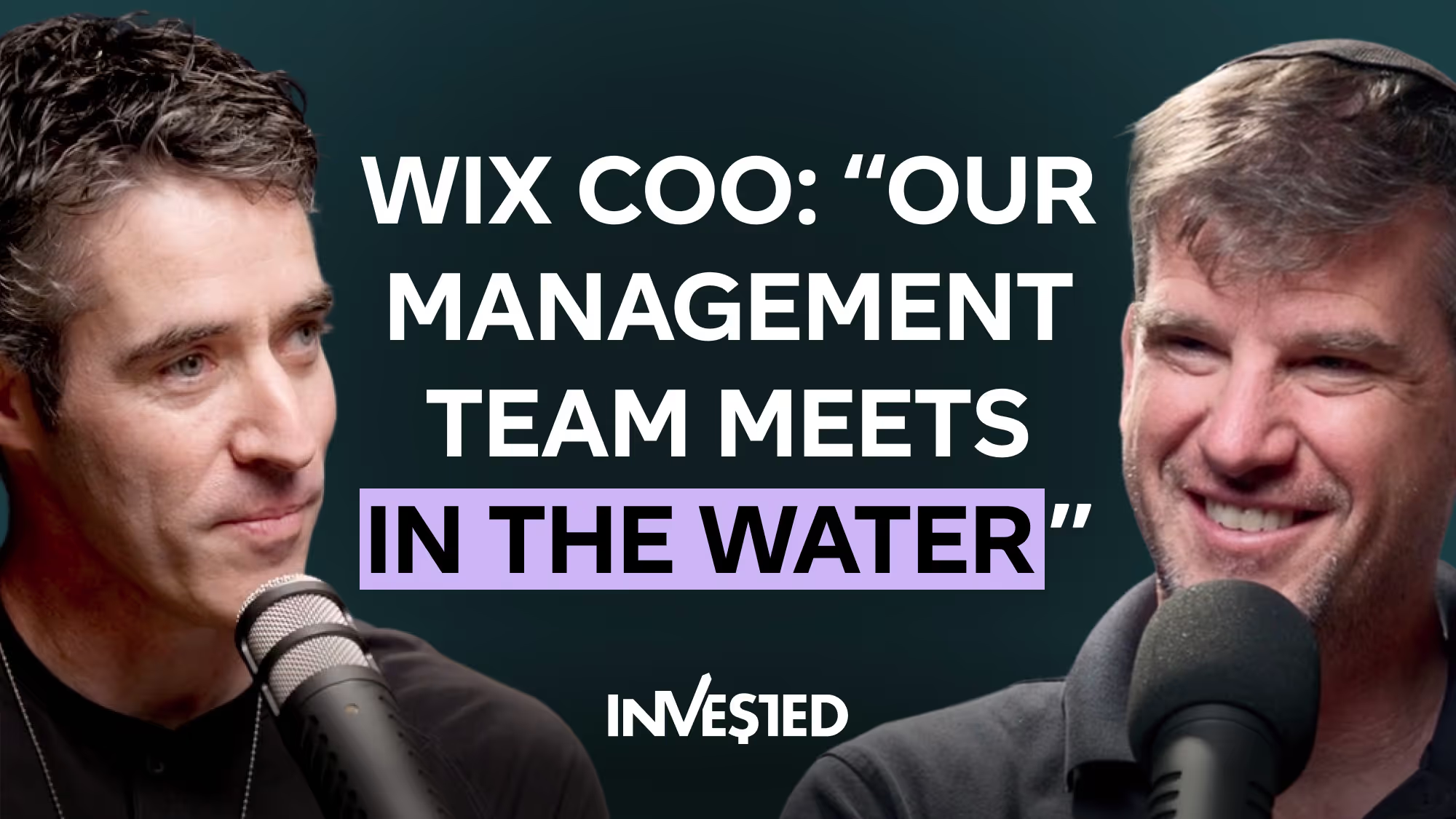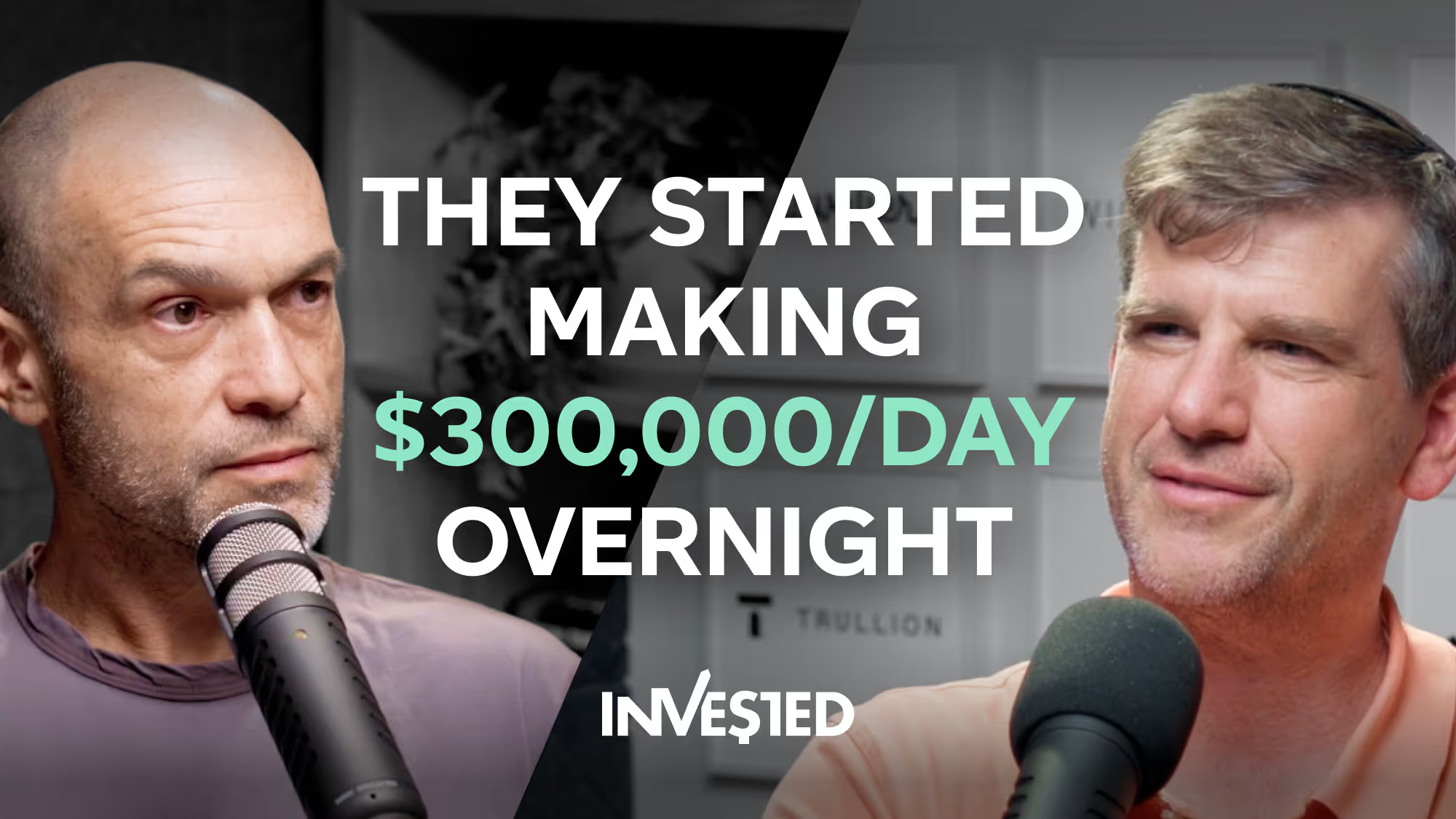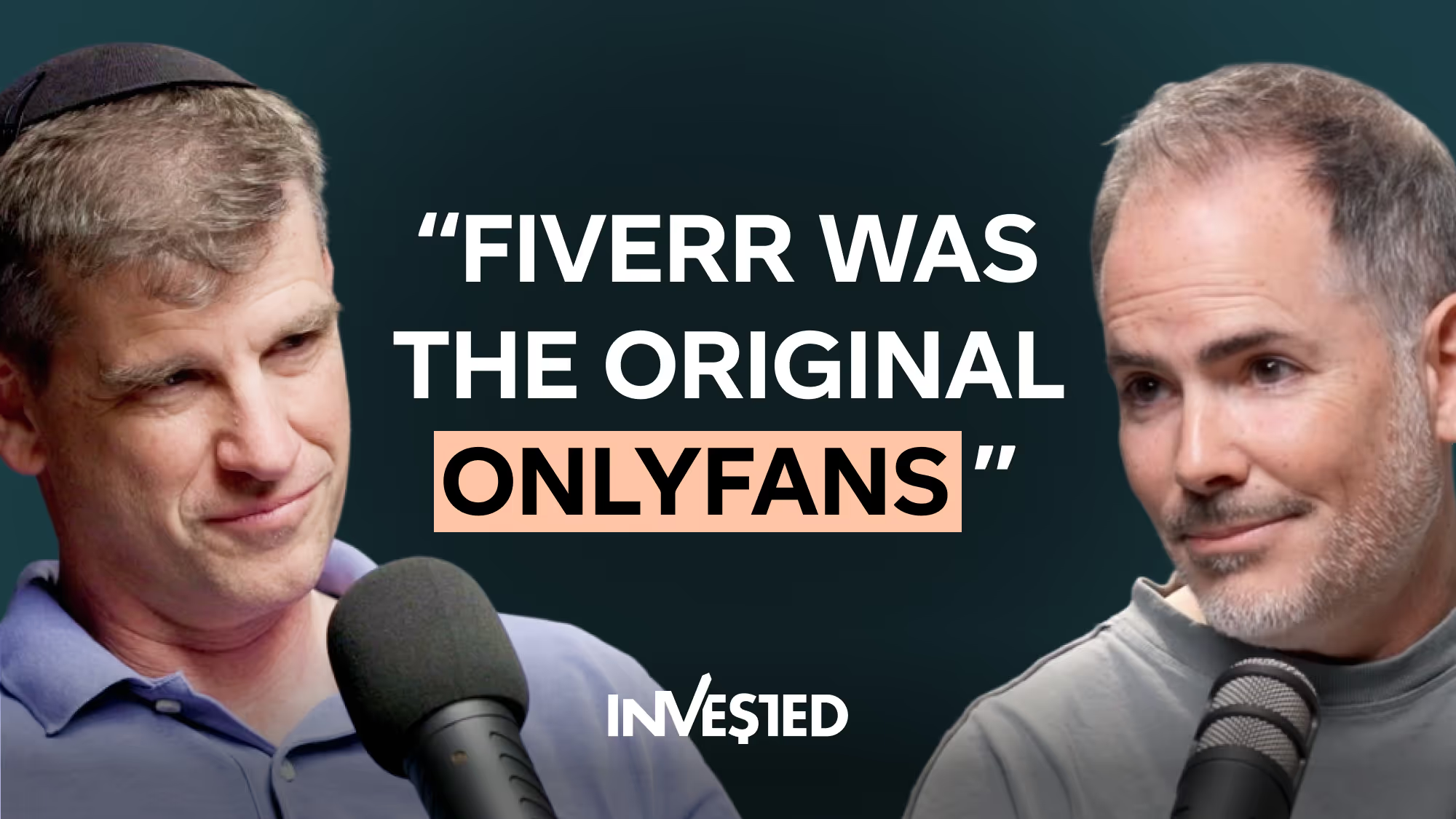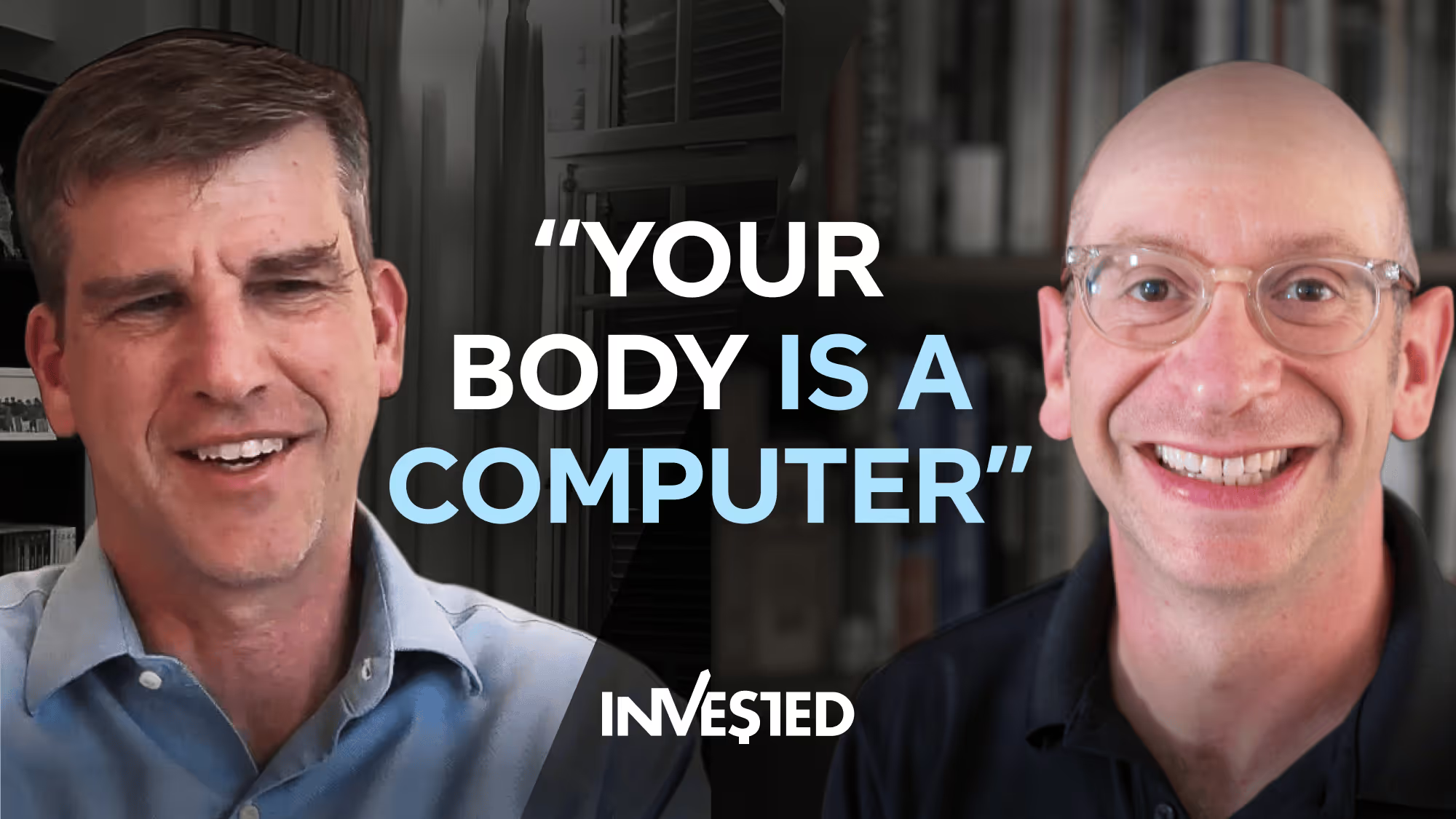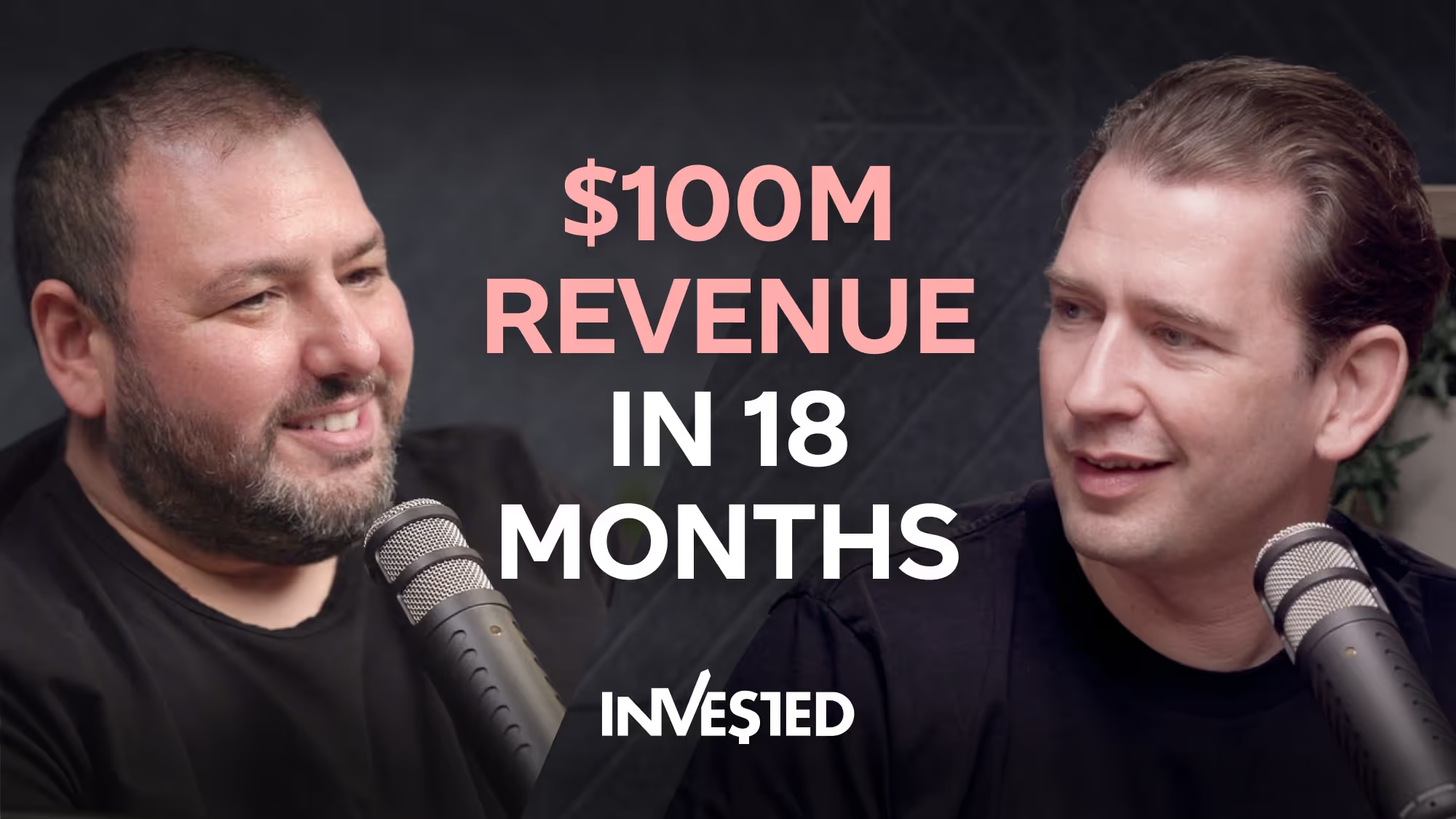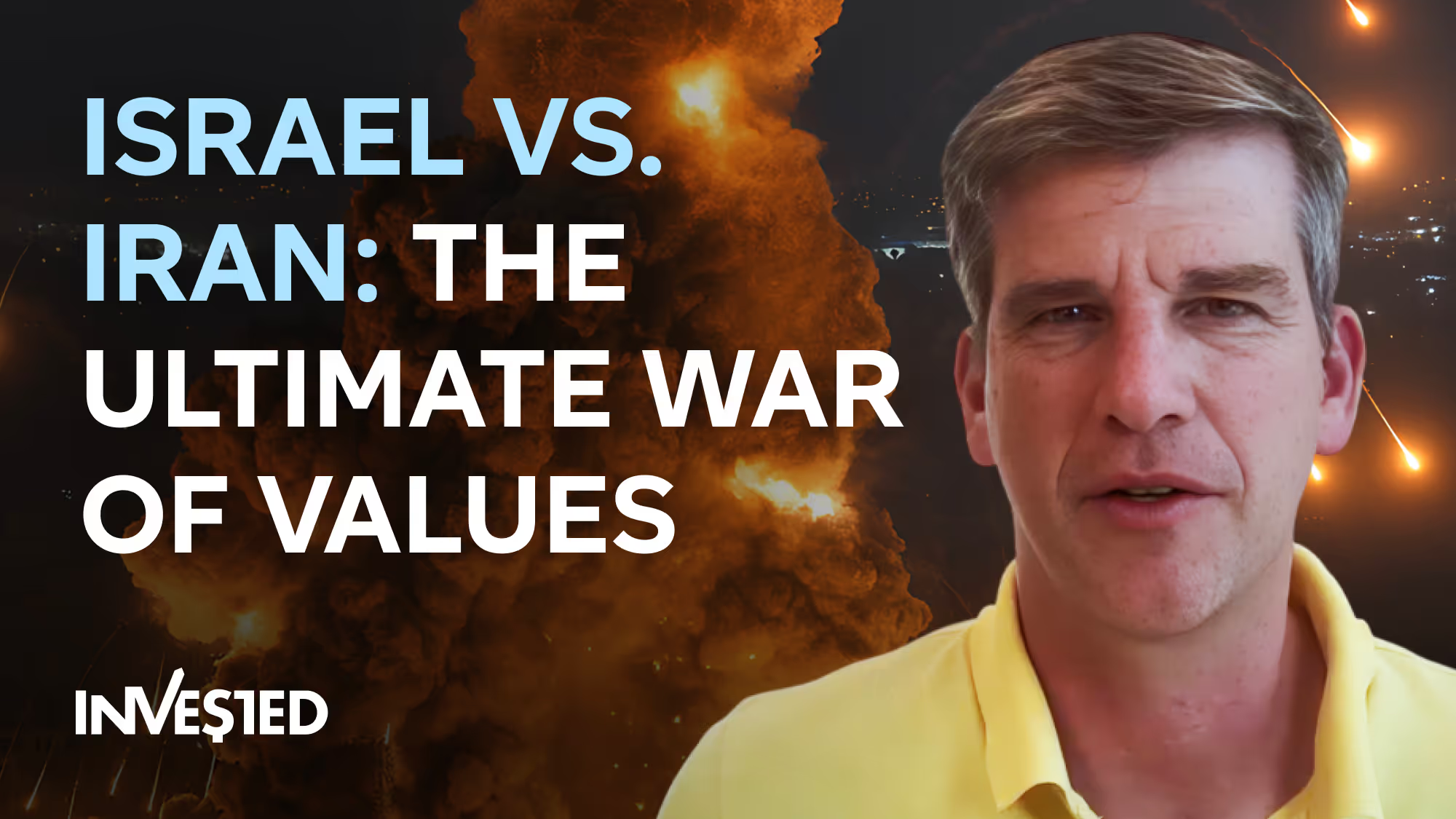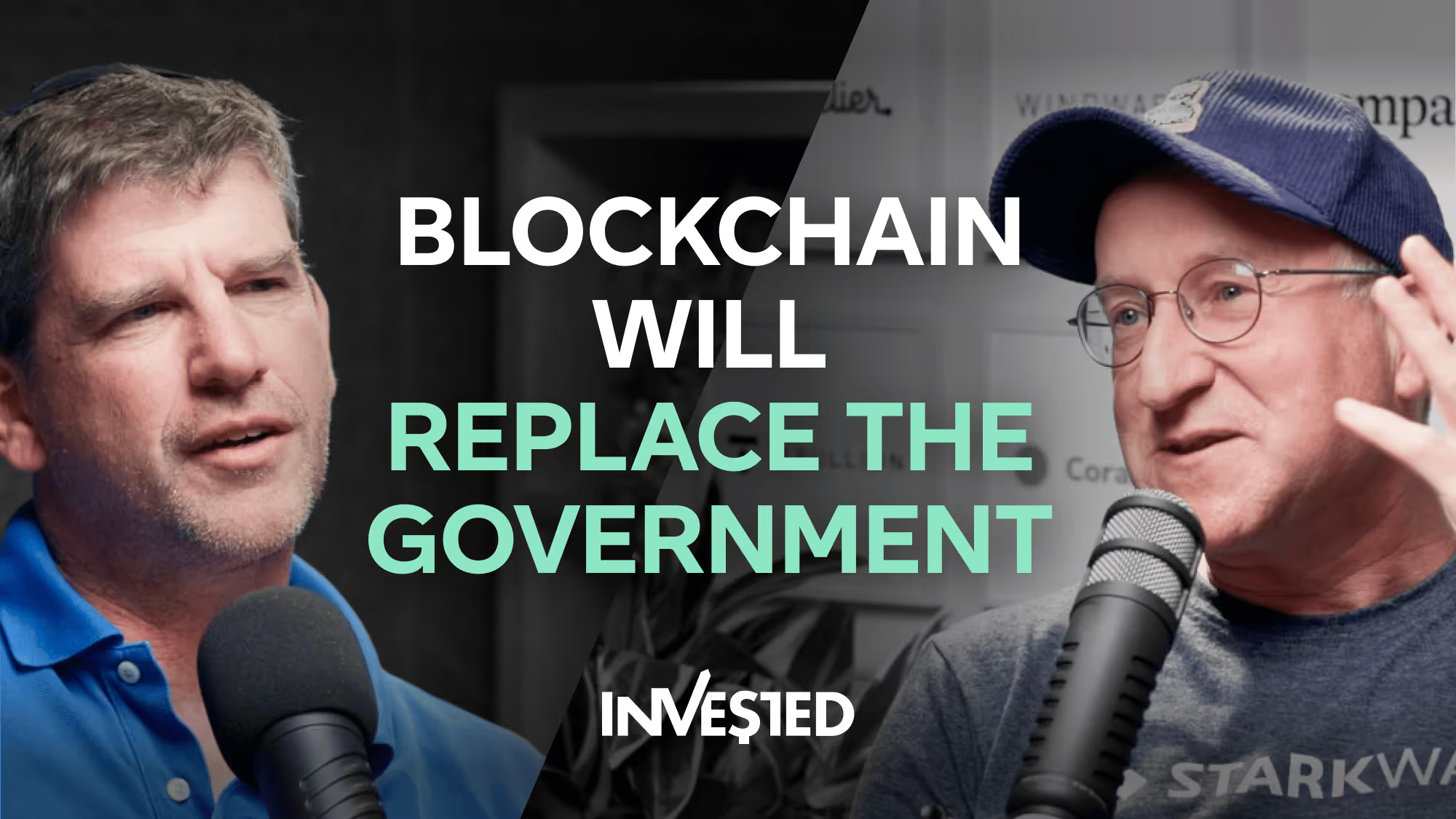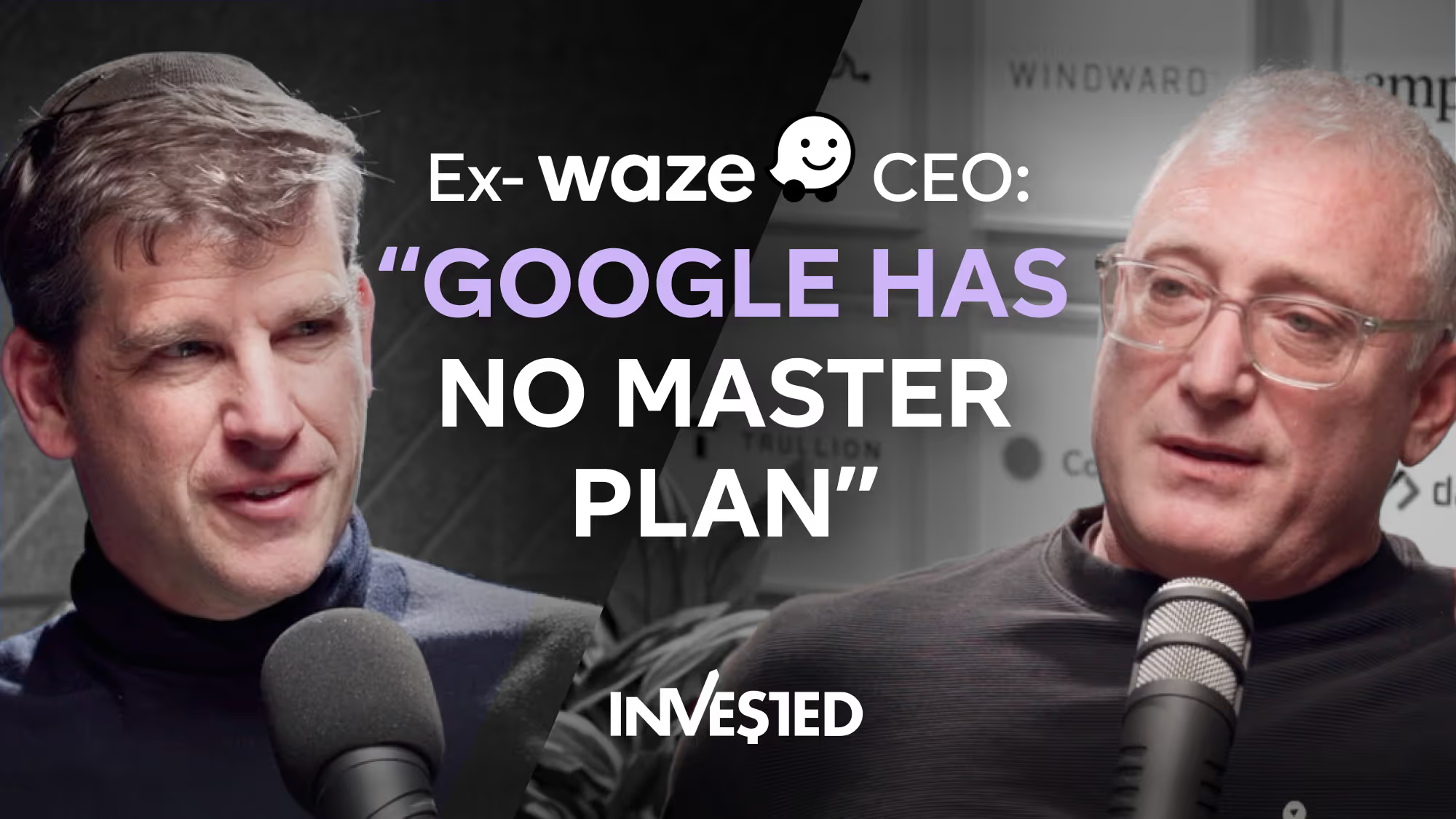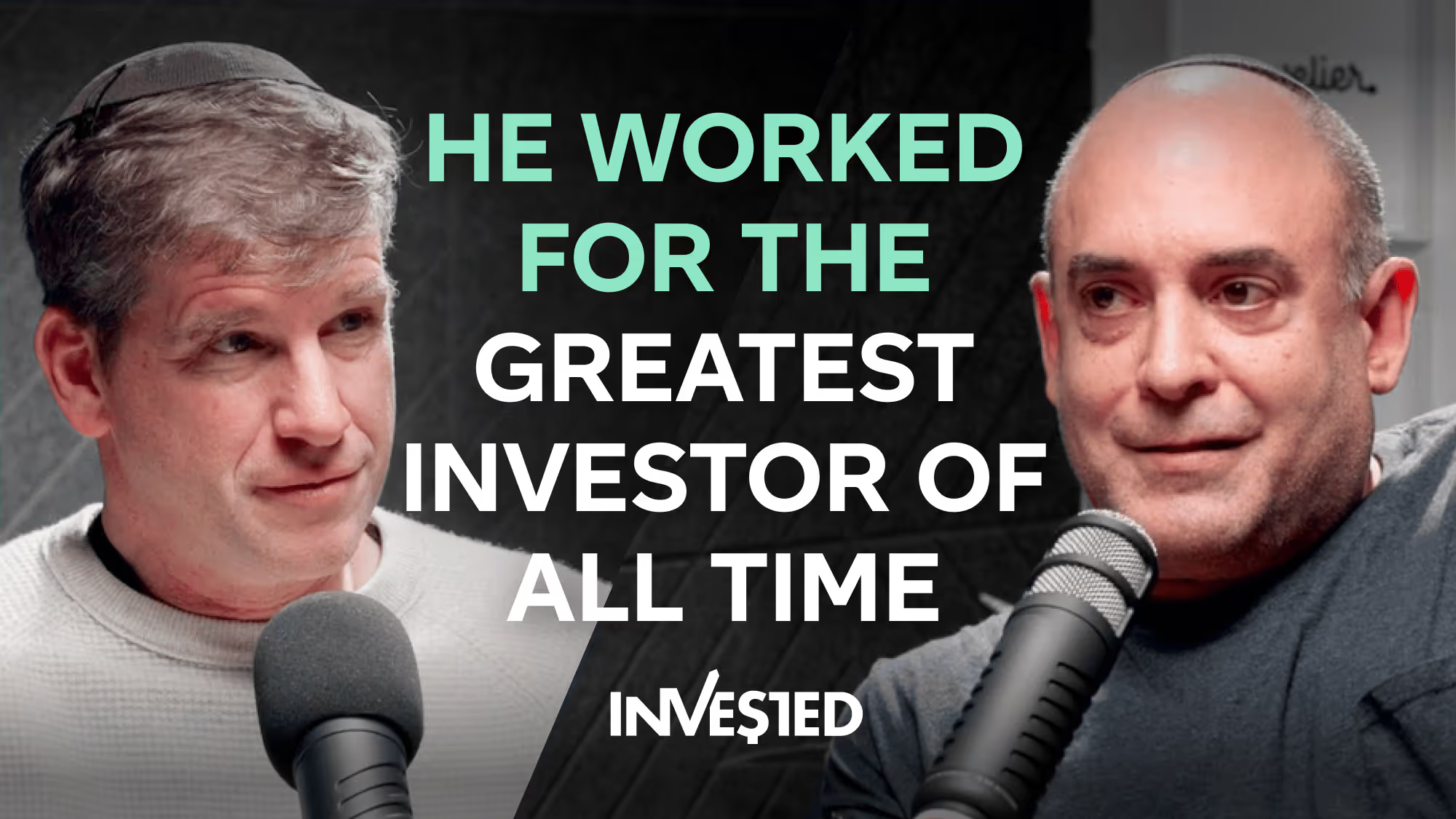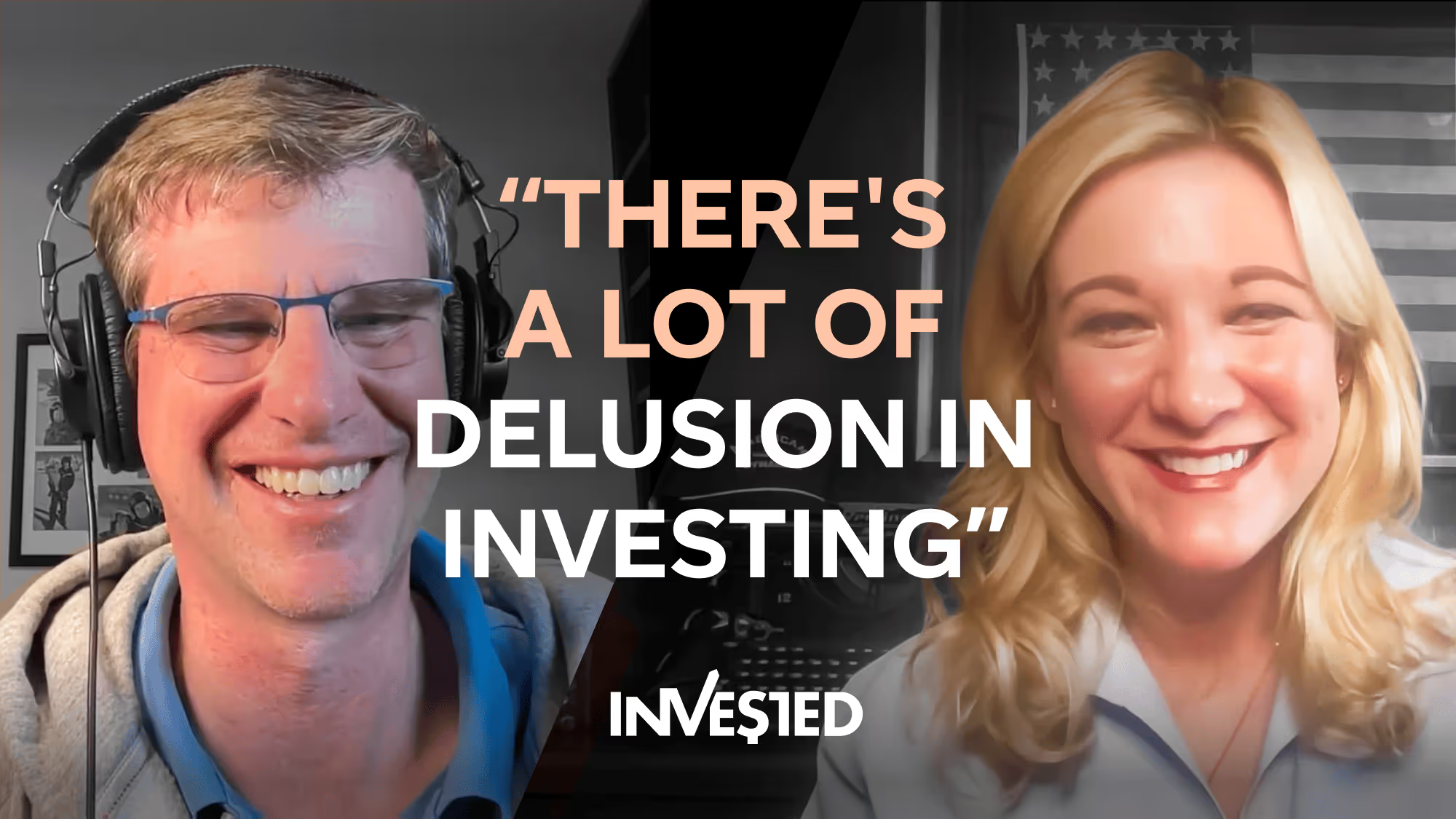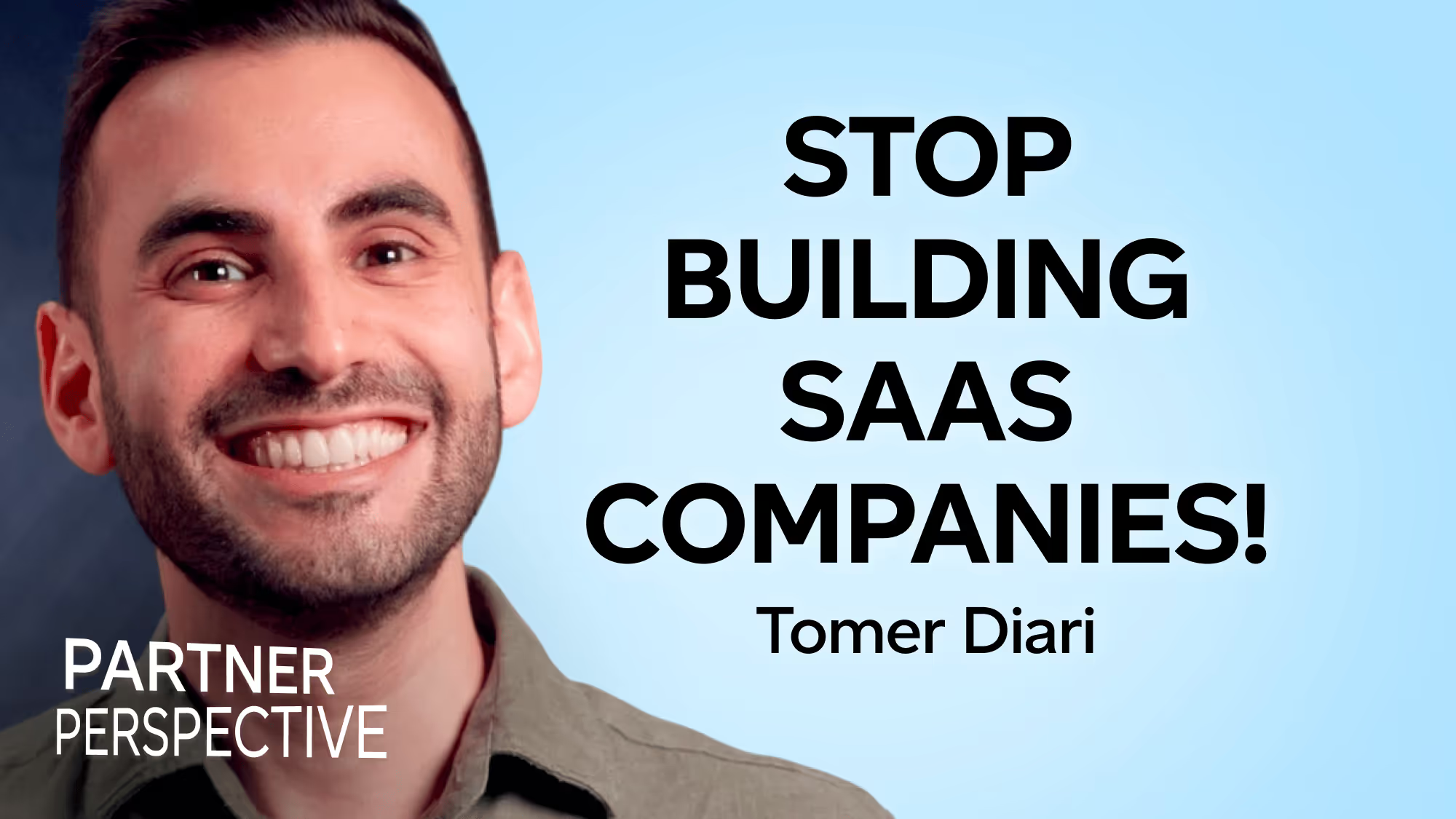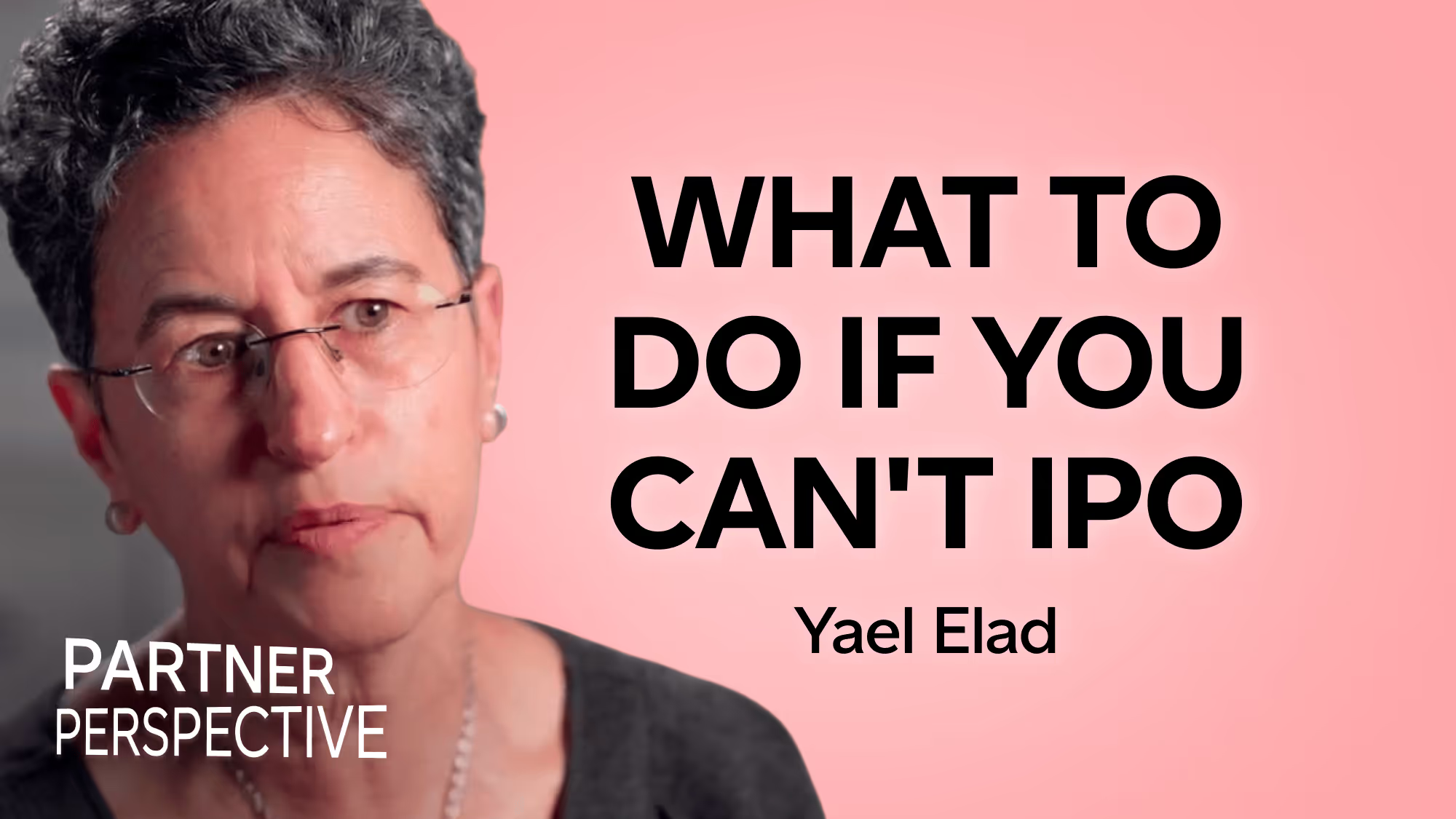Nir Hemed Takes on Semi-Autonomous Agents



You can’t go ten minutes without someone talking about AI, but most of the time, it’s hype without substance. Almost Human exists to change that; to dig past the noise and reach the sharp ideas, technical breakthroughs, and human stories that actually shape the future.
Let’s cut through the noise.
Nir Hemed Takes on Semi-Autonomous Agents



How can values create value? On this podcast, Michael Eisenberg talks with business leaders and venture capitalists to explore the values and purpose behind their businesses, the impact technology can have on humanity, and the humanity behind digitization.
Nir Hemed Takes on Semi-Autonomous Agents
Nir Hemed Takes on Semi-Autonomous Agents

Nir Hemed Takes on Semi-Autonomous Agents
Nir Hemed Takes on Semi-Autonomous Agents
- 00:00 Intro – From coding to managing machines
- 00:53 Meet Nir Hemed & Daisy
- 01:54 The brutal economics of property management
- 02:48 Ten agents, one mission
- 03:32 Meet Steven, the AI teammate
- 05:26 Parallelization > speed
- 06:38 Humans in the loop, by design
- 08:45 Eval frameworks and online accuracy
- 10:22 Internal vs. external agents
- 12:00 Workflows vs. agents – The orchestration paradox
- 14:42 Choreography vs. orchestration
- 16:27 Failure modes as assets
- 17:42 Evals as the new IP
- 19:20 Cultural transformation and comp models
- 21:00 AI moats: from data volume to data feedback
- 22:24 When is an agent “production ready”?
- 23:40 Building AI culture at Daisy
- 25:00 Co-founder dynamics in the AI era
- 26:45 Experimentation and safe-to-fail zones
- 28:10 Generative UI: chat meets structure
- 29:12 Eden’s rapid fire: AGI & the race ahead
- 29:58 Eden’s close + takeaway
Property management is a brutal business: low margins, endless paperwork, and human bottlenecks everywhere.
So what happens when you give AI agents the keys?
In this episode of Almost Human, Eden Shochat sits with Nir Hemed, co-founder and CTO of Daisy, a New York–based startup reimagining property management through AI. Nir reveals how Daisy built a team of ten autonomous agents - each with names, roles, and Slack access, and how one of them, “Steven,” now handles complex onboarding processes once run entirely by humans.
Eden and Nir unpack what it means to design trust between humans and agents, how to build eval frameworks that become a company’s secret IP, and why the future of work isn’t just automation - it’s orchestration.
From Temporal workflows to generative UIs and “AI coworkers,” this episode dives into the scaffolding era of AI: where humans teach machines how to manage, reason, and evolve.
Key takeaway: The companies that win in this era won’t be the ones that collect the most data, they’ll be the ones that build the best feedback loops.
Please rate this episode 5 stars wherever you stream your podcasts!
Eden Shochat
There's no freaking way this is gonna work.
Nir Hemed
For us, it was a huge opportunity, even before the AI revolution but much further after.
Eden Shochat
Basically it's a field where you're either losing money or screwing your customers. Right, it's like- and we love this with AI, human intensive, or just, generally low margin businesses are a huge opportunity for AI disruption.
Nir Hemed
This is a really classic example of how you use AI to scale your business and increase your margins.
Eden Shochat
Nir, welcome.
Nir Hemed
Hi. Pleasure to be here.
Eden Shochat
It's great to have you. Just because many people might not know what Daisy is, can you do the 30s pitch of who's Daisy and what are you doing?
Nir Hemed
Of course. I'm Nir. I'm the co-founder and CTO of Daisy. Daisy is a property management company. Tech powered, residential property management company. We were founded five years ago. We operate in New York City and the area. And, we are basically reimagining how property management should be, and we'll talk about this in this chapter. How we use AI to do stuff and, really exciting.
Eden Shochat
It's basically it's a field where you're either losing money or screwing your customers, right? It's AI, and we love this with AI. Human intensive or just generally low margin businesses are a huge opportunity for AI disruption, right. And just just so we have a sense of of your scale, like how many separate agents do you have working Daisy day in, day out in order to service your customers?
Nir Hemed
Human or AI agents?
Eden Shochat
No, AI agents.
Nir Hemed
Yeah. Of course. So we have about ten different categories of AI agents. Property management is a very wide business. It's not transactional. It's very wide. It's relationship based. And there are approximately 150 kinds of services. We have AI agents that capture certain domains, right. And can provide services within those areas. So it can be financials, maintenance, facilities compliance and so on.
Eden Shochat
In order to understand scale. Right. So when you add a new building today, what's the human labor you need to add?
Nir Hemed
So the traditional property management industry, like you said, is very human intensive, low margin, low NPS kind of industry. For us, it was a huge opportunity even before the AI revolution, but much further after. Specifically onboarding new buildings is a very outdated process. It looks today like it was in 1990, approximately, basically. A collection of a few hundreds to thousands documents, files, actual files, sometimes even paper files.
Nir Hemed
But that, you basically need to digest. Right? So, what we did, Daisy, is we've built an AI agent that is capable of orchestrating this transition as opposed to humans doing this collection, classification and ingestion of data. Specifically, and maybe this will take us further down the conversation, but we actually have a full personality for this agent.
Nir Hemed
We call him Steven. He's part of the team, has roles, responsibilities. You can communicate with him over slack. He has access to tools and data and so on. And, this is a really classic example of how use the AI to, scale your business and, increase your margins.
Eden Shochat
So it's not just, reducing costs, right? So how long would a switch of a business or a building take before. And how long does it take with Daisy? And what's the biggest impact if you look at the agentic, like, tasks like what's most impactful there?
Nir Hemed
Of course, the switch takes between 30 and 60 days, and it is dependent ,because it's a transfer process, it is dependent on the previous management company, which also has humans, and they actually have only humans, right. So you're basically dependent on them. When we introduced Steven, we basically were able not necessarily to shorten this period because it is dependent on the other party which are human.
Nir Hemed
But we could have basically a do more at the same time. Right? We could parabolize this operation, we could increase our ability to grow faster, and we could repurpose the team that was previously doing that to do more kind of like, add other, other types of work at, at the, at the organization, so that was the immediate benefit.
Eden Shochat
So something that is not spoken about much. Right. Because most, most people, many entrepreneurs don't realize where does AI stop or what capabilities it has today. And we'll talk later about this. But the the the interesting thing here is that it's some of the better deployment models actually put humans in the loop, meaning that
Nir Hemed
Correct.
Eden Shochat
It's not just putting the agent just praying that works for the user, it's how you get feedback from a human and causally improve.
Eden Shochat
So we have a flywheel, learning. Right. How does that work, in Daisy?
Nir Hemed
The way it works is, is as follows. First, when you build this kind of like agentic workflow with humans in the loop, you have a few options. So when you want to place humans, one option is actually to put them on the front right. And in a classic example of that is where your customer expects a certain relationship, right.
Nir Hemed
So you actually still keep the human touch. This is could be for branding reasons, for positioning reasons for relationship reasons. And and this is one really, really good place to put humans in service companies like Daisy. Whereas the human is really serving as kind of like, a trusted advisor, but the AI is behind him or her doing all the heavy lifting.
Nir Hemed
This is a really interesting positioning for a human, right. So they're basically not doing the work, but they're presenting, explaining and communicating with the customer. Another position that you can put humans in is the classic domain in the loop, either for evaluation or for online accuracy. Right. Let's start with online accuracy. In the case of, Steven, we have humans in the loop for making sure that the classification of financial documents, which are a bit more sensitive and we have like, kind of like a double verification.
Nir Hemed
Right? So you have the agent classification of the files, and then you have another layer of humans. So this is kind of like just to make sure that from an online workflow perspective, you still maintain high quality. And in some cases this is actually, beneficial because you kind of like want to optimize for accuracy over latency or right resolve time.
Nir Hemed
For the most interesting strategic placement for humans is, what we call evals, right? Evaluation framework, where you basically build an infrastructure that helps you, training benchmarks and data sets for, leveraging, AI in a better way. Right? So you have humans basically making sure that the, prompt is doing what they're supposed to do.
Eden Shochat
Just to to make sense of it. So by making it an intentional design and not kind of an afterthought because AI is not good enough, but actually saying who is more appropriate to work with the user? Where do I need more data? How do I tag that and how do I operationalize it? So if I'm intentional about it, it actually creates a system where it's not just an AI or an improvement on top of AI.
Eden Shochat
It's actually getting the right entity at the right time with the right person. That's it opens up an interesting question, like when you think about internal versus external agents. Right. So and single turn versus multi turn. Right. How are you thinking about this. If you look at those ten agents, how many of them are providing internal service versus external service.
Nir Hemed
When you are, basically building AI capabilities in your organization, kind of like I'm trying to generalize it for the audience. Starting with internal is just safer, right. You get like,
Nir Hemed
if there are errors you get like faster feedback loops. You can kind of like train. You can build trust internally with AI. And this is critical. You actually want to build trust internally with the AI before you do it externally.
Nir Hemed
When you have operational and customer support team, sales teams, marketing teams. Yeah, they need to trust that it's doing what it needs to do.
Nir Hemed
this is just like, change management culture tip that I can, advice that I can provide.
Nir Hemed
We, actually have many customer facing AI, but I think you you've mentioned it like one pass or zero shot or one shot, where basically you have a transaction and you have an LLM doing something in the in the transaction could be evaluation of documents, could be, phrasing of, communication.
Nir Hemed
Right. It could be generation of data. And we have many such like that. And like customers are almost kind of like used to that. It makes much sense. You can have like, you know, our AI did this, decided that, it works and there's very little friction. Whereas actually the full agentic behavior, which in my in my experience, this is a completely different technology where you have something that's fully agentic there, there and Steven, for example, is fully genetic.
Nir Hemed
And Steven communicates externally with the previous with the previous management company, you, you this is cutting edge, right? And this is where you actually need to be more cautious. And I would advise to start internally with those and then move externally as you feel more confident than you have in the evaluation framework in place.
Eden Shochat
So you started, Daisy, before the LLMS, before the - I think
Nir Hemed
Correct.
Eden Shochat
Before even GPT 3. So at that time, you start with the model T approach, right? It's like breaking down every process, every step to make it repeatable. Much like car production or, being able to reduce costs through leveraging, less professional
Nir Hemed
Correct.
Eden Shochat
Either people or systems.
Eden Shochat
So it's like I would look at this as a prerequisite to get AI right, but a different perspective can be it's great for repeatability, but agents actually are not repeatable like they are somewhat random. There are, they take autonomy. So how is the tension like between those two systems? And how do you transition, from something that is geared for scale repeatability towards agentic that is more open ended?
Eden Shochat
And how do you leverage both?
Nir Hemed
Great question. And you're absolutely correct. When we founded Daisy before the AI revolution, we had the same vision and the same hypothesis that we have now, which is that property management is destructible and you can scale it with technology. Nothing changes there. But our approach before the AI revolution was to basically take those 150, 200 kinds of transaction and basically build a very rigorous and, and strict workflow that kind of like runs this end to end.
Nir Hemed
Right? So we used to say that if in a traditional management company, you have this wall with manuals on the wall, you basically pull this, and you say, okay, how do I evict someone? How do I do a lease? How do I do this? By relation, then a daisy. This book of knowledge is in in our code, and we actually use the very powerful code base workflow engine called Temporal which is very strict, very rigorous.
Nir Hemed
And we still have it. I'm still use it. But this is a fundamentally different approach on how do you tackle a core service. How do you tackle a transaction? When the generative AI revolution started, we actually started experimenting with something that's much more fluid and flexible than those strict code based workflows where you basically have general guidance to an agent on how to solve something, and then you have far less control.
Nir Hemed
And I think that what I described, though, is those two extremes, and I'll be happy to share maybe a bit about how we kind of like balance those and what we learned. Where do you want me to dive? Click into?
Eden Shochat
So yeah, I would definitely, we should drill into - I think that most people actually take those two extremes versus see how they can work together. So how can you create the scaffolding or kind of the, still use the process oriented steps in order to make sure that you in a transition, you make sure you get all the information from your customer or even direct them appropriately.
Eden Shochat
So that's very much of a checklist oriented approach. While an agent might miss a step or, hallucinate. So actually leveraging both together I think is a is a huge opportunity that that people just don't think about enough.
Nir Hemed
The way that I would describe it is, there's a common kind of like, software architecture pattern of choreography versus orchestration. Right. And we are in the world of orchestration, right. Choreography is basically when you kind of like, let events run in the system and kind of like locally decide what to do next. And then the other approaches, orchestration.
Nir Hemed
And I think that orchestration is a guiding principle both for workflows and for, agents. The way that I think about this is the following. If you have some sort of a business transaction or process that you want to automate, the first thing you need to do anyway is to do this process mining, right. Understanding how you want this to be achieved.
Nir Hemed
And this is generally true. And once you have that in mind, again, as I said before, if you are too strict with workflows, then it's really hard to operate, whether it's internally or externally. Like you can like you can't, it's like a track, a rail that you can't escape from. And this is in reality sometimes creates problems, right.
Nir Hemed
Sometimes you need this flexibility. Whereas with agents, it's if it's too flexible, then you can also run into problems. I'll give you an example at Daisy, we want to kind of like react to tickets. Right. It's we can think of requests right as tickets. And you want to kind of like process them. Right. So when you think about that you need to do a few things right.
Nir Hemed
You need to first identify the user. Right. Who's who am I speaking with. It could be a resident, an owner, a renter broker, a vendor. Right. And every business, every industry has their own complexity on who's interacting with us. Then you need to understand things like, where do you live? Like which property are we talking about? And then you go into, okay, what's the intent?
Nir Hemed
What are you trying to do? What do you need? Right. And when we try to do this, what I said in a fuller agentic way, it was just like, really hard to force the agent to do these steps? Like one, two, three, right. Like I said, now. You actually want to force some, you want to orchestrate it.
Nir Hemed
And we saw that our agent kind of like jumped between stuff, like he understood the intent but didn't understand who is he's speaking with. Right. So and like you can solve it with prompted engineering. You just like can't you can't like force it. And what we did is we actually if I'm going back to the two extremes, we actually took full agents and we dialed them back a bit into a network, a graph of agents that is actually orchestrated from the top right.
Nir Hemed
So we say, so now we have a workflow or we have some sort of an orchestration framework which is code based. And we now say this is a tiny agent that's doing just this, and now you do this, but you do it in a full, agentic way and so forth. Right?
Eden Shochat
That's, that's actually that's super interesting. So it and I think we both agree that at the asymptote AI should be able to do what are you talking about? But right now we're in kind of the scaffolding era. You can actually you can take the existing technologies and you can force them or help them go towards, the functionality that you need.
Eden Shochat
And at some point we can just remove that scaffolding and have it work with just a classical LLM. But we don't know when that actually happens. And it brings us back to evals. Right. It's like in my mind, having an eval database that says, hey, we try to do this thing. So we try to have that agent go through a process.
Eden Shochat
But it didn't work because it was either too random or didn't work or, couldn't understand exactly the situation, didn't have contextual data, whatever. If you have a database of those failure modes, it can be a true asset of your company because it allows you to move faster. So as soon as something is resolved, you can take advantage of the new technology or a different model.
Eden Shochat
How are you thinking about this? How are you thinking about building the eval database of Daisy?
Nir Hemed
I'll try not to be too philosophical, but in my mind, the eval framework is basically where you code your IP. It's where where your IP is coded from a kind of like you captured the domain, like the domain is captured in this layer in a way. Right. And this is like very hard to replicate. This is a very kind of like industry specific.
Nir Hemed
And I believe we believe that these it that we probably be the first one in the world that will have for residential property management, this layer of evals that captures the essence of what it means to be a really good property manager. Right, capture the nomenclature, capture the the processes. Right. Where you can be flexible, where you can be strict and so on.
Nir Hemed
So this is a bit philosophical now practically, I would basically, think of it.
Eden Shochat
That, by the way, that's not philosophical. I think that any person listening in to this podcast, that's how they should be thinking about creating advantage over time. So go ahead. But it's absolutely not philosophical.
Nir Hemed
Great. So, so yeah, I, and what, what I think is like, okay, let's think about it. I'll try to describe how you kind of like layer this, create this compounding effect. Right. So at first you have this agent and you just like look at it right, doing stuff. And you kind of like judge whether it's good or not.
Nir Hemed
But this is not enough. Right? So you start to create those benchmarks, and you can think of about those benchmarks as questions and answers, but because everything is at random in a way, right, because we're talking about LLMs, even if you run the same benchmark like one after the other, you could get slightly different results. Then you start generating, and there are many practices of using an LLM as a judge to make sure that the answer is close enough to what you wanted to get as a response, and so on.
Nir Hemed
So there are a few practices that are now emerging. The most interesting part is in two aspects. First, how do you plug in your domain expert as a it's it's it's a culture and it's also an org chart. Right. So you basically take people who were previously like owning the service and, you know, repurpose them. Right. You're not customer facing anymore.
Nir Hemed
And you're you're helping building the infrastructure of AI agents. Right. And how do you, build internal interfaces for them to actually capture good, good examples or bad examples? Right. I would even mention if someone from the audience didn't see what Lemonade did, they actually built a fully fledged internal system that helps, operators see how LLMs behave, replay answers, modify them, and plug that back into, the, the, the the the logic or the prompt or the model.
Nir Hemed
And we do we are following that, that steps. And this is critical. The last piece of the puzzle is how you close the loop by creating the next version, right. The next, how does it look like. And the first stage and this is where we are now, is to basically capture this, capture the information and then basically create the next version code the next version.
Nir Hemed
Right. And this can be changing of the prompt, but it can also be making your internal APIs the tools right. More expressive. Right. I, I was surprised how, impactful it is to improve your accuracy by making your APIs more expressive and more, documented.
Eden Shochat
It's like, yes. Like giving better tools for any works man.
Nir Hemed
Amazing.
Eden Shochat
Right. It's I you and I think many times you try to solve everything with the same technology and limbs. It's transference is, such a great technology, but it's it doesn't sense, right. It doesn't understand, like, tooling is an important, part. It's much more important than, many things.
Eden Shochat
And but you raise a couple of things that I think are worthwhile, noodling on or at least thinking. First, in the early, early days of Monday.com, when it was still called the Pulse, Roy did something super smart. He compted his, salespeople, similar to engineers. So they didn't have any, comp sales comp. Based, upside.
Eden Shochat
And the reason was he said, I'm learning how to sell the products. And so I want our incentives to be aligned. And what you're saying is pretty interesting. It's, thinking that, there is realignment of employees in the company that their comp might have been before, geared on their interactions outside or maybe sales, but now you want to align them.
Eden Shochat
You want actually to have them provide better guidance to agents. So the comp should probably also the comp models also change. That's one thing that I think is like truly interesting. The other is investors nowadays are in kind of a strange combination of exuberance for AI as well as, thinking there are no moats and there's no venture anymore.
Eden Shochat
And they it's like deer in the headlights, that you actually see in many situations. And what you describe of and of collecting information and, and closing the feedback loop is potentially a generator of moat. Right.
Nir Hemed
Correct.
Eden Shochat
So the more buildings, you serve, the more feedback your agents get, the more feedback they get, the more you can tune, ideally, automatically, the agents, so they better serve.
Eden Shochat
And if not, but even if not, as long as you're aware and focus at getting that feedback and improving on your agents, it makes you a better company.
Nir Hemed
Correct.
Eden Shochat
That's a very different situation, than before. It's like, yeah, it's, you know, what's not clear. And I think it would be really interesting with your experiences. At which point do you define that an agent is good enough performance wise in order to put a production ready?
Eden Shochat
Like, at what point do agents become team, teammates?
Nir Hemed
Specifically with, with a service company like Daisy. I really like the focus on operational metrics. Operational metrics could be response time, resolve time, elements of throughput, customer satisfaction. Right. Whether it's transactional or and I think that once you have an agent that you feel that can move the needle, and it's actually very easy to understand because you, you plug it in a certain area of domain and you see you see two things.
Nir Hemed
First, you start seeing the metrics improving, but you also see the team, more reassured because property management is difficult. It's a hard business. And you see them kind of like, okay, I have help, right? It's like getting another person to your team that can help you. Literally, you see the same excitement of them adopting an agent that's new to the team and is like, oh, thank God that this agent Lily, now can classify tickets for us, right.
Nir Hemed
And and, they're so happy, though this is the point where you say, okay, it's production ready, right? Yeah. So it's a mix of kind of like, yeah.
Eden Shochat
Yeah, it’s pretty subjective and it's like operational metrics. But then like employee happiness about interaction with other team members who happens to be AI.
Nir Hemed
I have to I have to put a point here, because I think you also mentioned that it is likely related to the comp, story that you said before, Yotam, my co-founder did an amazing job from, I think, the introduction of GPT 3.5. We started doing bi monthly, like every two weeks. We had a session where we'd spent at least ten minutes talking about the AI in the entire company.
Nir Hemed
The amount of, of of, effort, that, investment that he basically took the company towards this AI era, that every person in the company is like waiting for that. There's zero, resentment or, skepticism. Right. Because we invested a lot in the culture of, like, okay, this is like, this is going to carry us forward.
Eden Shochat
I love that that's one of the highlights that that's one of the highlights of our conversation and actually had a question there's related to that. But you might have answered this, which is how does a technical co-founder interact with his non-technical co-founder? Especially in the world where, the capabilities of AI change so fast. Like, how's how's it dynamic when, your co-founder comes and tells you about this amazing idea that you say there's no freaking way this is going to work or maybe actually inspires, like, how how does it change the interaction between the two co-founders?
Nir Hemed
Yeah. First, the I have to say that Yotam is, while he's not a coder, he's, like, one of the best product people that I, that I know he's extremely technical, and he knows a lot. But I think that as a CEO of a tech company, sometimes dreams big. And, yes, it's good that he dreams big.
Nir Hemed
This is what this is what steers the company forward. And yes, you are correct that sometimes I need to kind of like capture this dream, which is maybe very high up and try to kind of like design how this meets us in the day to day. And, actually, he was dreaming of agents in the workforce maybe one year before I saw it being discussed elsewhere.
Nir Hemed
First, it was hard to believe, but now it's reality, at Daisy it's reality where we have agents as part of team members. So I'm basically just connecting the dots. It's it's it's my role. I think.
Eden Shochat
It's like science fiction, right? As a kid, that's my favorite line of books. And many of the science fiction books actually portrayed what what we're going through today. So again, Non-technical co-founder is like a science fiction book. Maybe, and it could be that the emails database that we talked about before. Right. So having, those dreams is on and if you can, it has prior failure modes, that some will be resolved by data, some by the next generation.
Eden Shochat
So any dream, any idea, like what we need is to teach the non-technical people how to write that down in a way that that that works. What's the institutional memory if you have like how does it work over time? What's, like how great was it to seed control to AI and, institutional memory of, like a big failure mode?
Eden Shochat
That happened in some adoption scenario.
Nir Hemed
Every person in the audience listening to this has their own set of problems that they're trying to solve. And I think that everyone knows where are the areas that you want to can experiment. You need to really always have this area where you can experiment with - an example could be, certain types of customers that you feel safer to fail, right, or certain kind of interactions or, maybe lines of business where there's no, regulation involved.
Nir Hemed
Right. I wouldn't start there. Right. Like or there. There's no financial transactions. I don't want to start there. I want to start in areas that are safer. And once you have this area that is safe to experiment, and you also engage the team, the operational team, whatever marketing, whoever that's working there with you, you say, hey, guys, we're we're experimenting with stuff.
Nir Hemed
We could fail some. Some of those failures can be embarrassing. That's fine. Like we will we will work with that. And, and they will do whatever it takes to learn fast and right, and recover. I can give an example, right. We have, an agent that responds extremely fast over email. Why? Because it's AI. But we are not in this line of in this area.
Nir Hemed
We had customers basically saying, this is too fast. Why why is it so fast? This is like surprisingly fast. And we actually had to artificially add some kind of like wait time before the responses are being sent because it created some kind of like what? What's happening there? And this is, again, it's a certain area of the business where the, the, the, the responses are generated by an agent, but the customer doesn't know that it's an agent.
Nir Hemed
Right. So, this was okay. It's fine. Okay. We fix that. Let's let's move on. Right. Because in it, we started with an area that is that is safer to experiment with. And this is my general advice.
Eden Shochat
Erez Dickman mentioned, that Lemonade framework before, Erez Dickman, when when I consulted towards, this episode actually mentioned something, a different way to, to risk managers at risky situations instead of the AI actually, either taking the action or helping you take the action, but in an unstructured way, it would actually drive it should actually drive a UI like the the old school UI.
Nir Hemed
Amazing.
Eden Shochat
So, hey, you want to change your payment? Schedule. Listen, here's the UI. I will open it for you. I might prefilled it for you, but still, you need to interact with it in a structured way.
Nir Hemed
Amazing. There's a lot of research today about interactions with AI. And one really interesting is kind of like everyone knows the chat, right. Chat is a great interface for it for, AI, but like I, I see it evolving in many places. Even use you can see in ChatGPT sometimes it's renders like a table or some sort of -.
Nir Hemed
And there's this concept of generative UI, right. So basically instead of like asking you a question of like, whatever, how many, what's the size of your apartment? Right. Instead of and you can type the answer, you can basically render a slider, right. Or whatever UI component that's easier for the customer to the user to interact with. And this is a really, really interesting way to, create interactions that are also providing this, safety.
Eden Shochat
Yeah.
Nir Hemed
And I think that there are actually even two moats here. I'll just like touch on that for a second. You can have a preset of components that you just like, plug in the chat. Right. And you can also think about generating custom. Right? Kind of like vibe coding on the fly. Whatever interface that the AI would do, like whatever.
Nir Hemed
Like maybe we'll try a map, but you don't - and then you have you need access to the design system and so on. Really interesting technologies happening there.
Eden Shochat
I love it. So I'll end with just two quick questions. I usually ask, every every person. When do you think age AGI is coming? What's your bet?
Nir Hemed
2027.
Eden Shochat
2027 so an ASI immediately after
Nir Hemed
Probably.
Eden Shochat
China or the US?
Nir Hemed
The US.
Eden Shochat
And so far it's 2 to 1. And if I get to vote then it's 2 to 2 anyway.
Nir Hemed
I'm, I'm for the, US, yeah. Yeah. Team. I'm Team America.
Eden Shochat
Team America, hey, thank you so much. This was awesome.
Eden Shochat
Thank you very much. Talk soon.
Nir Hemed
Talk soon. Bye.
Eden Shochat
What Nir is building at Daisy is more than an automation tool. It's a new layer of trust between humans and machines. The companies that win in this era won't be the ones that collect the most data or have the biggest models. They'll be the ones that have the feedback loops making their agents better.
Eden Shochat
Because the real challenge isn't making agents act, it's helping them evolve. If you have any questions, comments, recommendations for future guests, feel free to email us at, almosthuman@aleph.vc. If you enjoyed today's episode rate as five stars, share it with a friend. I'm Eden Shochat, and this is Almost Human
Daisy, Nir Hemed, Steven (the agent), Lemonade, Monday.com, Temporal, AGI, ASI, Riverbed, Aternity, Aleph VC, Erez Dickman, Yotam Cohen, Roy Mann, Lemonade Eval Framework, AI Agents, Generative UI
Follow Nir Hemed on LinkedIn: https://www.linkedin.com/in/nir-hemed/
Follow Nir Hemed on X: https://x.com/HemedNir
Keep up with Almost Human here: https://www.aleph.vc/almost-human
Follow Almost Human on Instagram: https://www.instagram.com/thealmosthumanpodcast/?hl=he
Learn more about Aleph: aleph.vc
Sign up for Aleph’s monthly email newsletter: https://newsletter.aleph.vc/
Subscribe to our YouTube channel: https://www.youtube.com/@aleph-vc/
Follow Eden on X: https://x.com/eden
Follow Eden on LinkedIn: https://www.linkedin.com/in/edens/
Follow Aleph on X: https://x.com/aleph
Follow Aleph on LinkedIn: https://www.linkedin.com/company/aleph-vc/
Follow Aleph on Instagram: https://www.instagram.com/aleph.vc/
Executive Producer: Erica Marom Chernofsky, Uri Ar
Producer: Dalit Merenfeld
Video and Editing: Dalit Merenfeld
Music and Creative Direction: Uri Ar
Content and Editorial: Dalit Merenfeld and Kira Goldring
Design: Uri Ar
Daisy, Nir Hemed, Steven (the agent), Lemonade, Monday.com, Temporal, AGI, ASI, Riverbed, Aternity, Aleph VC, Erez Dickman, Yotam Cohen, Roy Mann, Lemonade Eval Framework, AI Agents, Generative UI
Follow Nir Hemed on LinkedIn: https://www.linkedin.com/in/nir-hemed/
Follow Nir Hemed on X: https://x.com/HemedNir
Keep up with Almost Human here: https://www.aleph.vc/almost-human
Follow Almost Human on Instagram: https://www.instagram.com/thealmosthumanpodcast/?hl=he
Learn more about Aleph: aleph.vc
Sign up for Aleph’s monthly email newsletter: https://newsletter.aleph.vc/
Subscribe to our YouTube channel: https://www.youtube.com/@aleph-vc/
Follow Eden on X: https://x.com/eden
Follow Eden on LinkedIn: https://www.linkedin.com/in/edens/
Follow Aleph on X: https://x.com/aleph
Follow Aleph on LinkedIn: https://www.linkedin.com/company/aleph-vc/
Follow Aleph on Instagram: https://www.instagram.com/aleph.vc/
Executive Producer: Erica Marom Chernofsky, Uri Ar
Producer: Dalit Merenfeld
Video and Editing: Dalit Merenfeld
Music and Creative Direction: Uri Ar
Content and Editorial: Dalit Merenfeld and Kira Goldring
Design: Uri Ar

